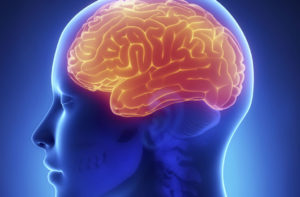Researchers have found that routine physically activity can help reduce depression. When you’re physically active your brain releases chemicals that help relieve stress, promote alertness, and improve your overall mental well-being.That said, becoming more physically active while fighting depression can seem daunting. Here are some simple tips to get you started and keep you going. Read the rest of this blog.
Five Simple Tips for Physical Activity While Fighting Depression
How to Prevent Stress From Shrinking Your Brain
 Have you ever felt so stressed out and overwhelmed that you can’t think straight? We now know that prolonged stress or trauma is associated with decreased volume in areas of the human brain responsible for regulating thoughts and feelings, enhancing self-control, and creating new memories. A new research study, published in today’s issue of Nature Medicine, is a first step in uncovering the genetic mechanism underlying these brain changes.
Have you ever felt so stressed out and overwhelmed that you can’t think straight? We now know that prolonged stress or trauma is associated with decreased volume in areas of the human brain responsible for regulating thoughts and feelings, enhancing self-control, and creating new memories. A new research study, published in today’s issue of Nature Medicine, is a first step in uncovering the genetic mechanism underlying these brain changes.
Depressed People’s Brains are More FragmentedIn this study, conducted by Professor Richard Dumin and colleagues from Yale University, scientists compared the genetic makeup of donated brain tissue from deceased humans with and without major depression. Only the depressed patients’ brain tissues showed activation of a particular genetic transcription factor, or “switch.” While each human cell contains more than 20,000 genes, only a tiny fraction of them are expressed at a given time. Transcription factors, when activated, act like light switches, causing genes to be turned on or off. This transcription factor, known as GATA1, switches off the activity of five genes necessary for forming synaptic connections between brain neurons. Brain neurons or nerve cells contain branches or dendrites that send and receive signals from other cells, leading to interconnected networks of emotion and cognition. The scientists hypothesized that in the depressed patients’ brains, prolonged stress exposure led to a disruption of brain systems involved in thinking and feeling. Depressed brains appeared to have more limited and fragmented information processing abilities. This finding may explain the pattern of repetitive negative thinking that depressed people exhibit. It is as if their brains get stuck in a negative groove of self-criticism and pessimism. They are unable to envision more positive outcomes or more compassionate interpretations of their actions.
Glucocorticoids Damage Brain Neurons
The stress response involves activation of a brain region known as the amygdala, which sends a signal alerting the organism to the threat. This results in activation of the HPA (hypothalamic-pituitary-adrenal) axis and release of a cascade of hormones, including cortisol, widely regarded as the quintessential “stress hormone.” While short-term cortisol release prepares the organism to sustain “fight or flight” and fend off an attacker, long-term exposure appears to cause brain neurons to shrink and interferes with their ability to send and receive information via branches called dendrites. In animal studies, under chronically stressful conditions, glucocorticoids such as cortisol can remain elevated for long periods.
Traumatic Experiences Can Shrink the Hippocampus in Those Who Don’t Recover
This finding is another piece of the puzzle regarding how stress and prolonged distress may impair our ability to think in creative and flexible ways. Research in both mice and humans has demonstrated an association between stress exposure (foot shock in mice, life events in humans) and shrinking of the hippocampus – the brain center responsible for forming new, time-sequenced memories. Studies in women with PTSD resulting from childhood sexual abuse and Vietnam veterans with PTSD have shown 12-26 percent decreases in hippocampal volume, relative to those without PTSD. In another study, patients recovered from long-term major depression showed a 15 percent decrease in volume of the hippocampus, compared to non-depressed patients.
Major Life Stress Damages the Prefrontal Cortex
In addition to hippocampal shrinkage, major life stress may shrink brain neurons in the Prefrontal Cortex (PFC), the brain area responsible for problem-solving, adaptation to challenge, emotional processing and regulation, impulse control, and regulation of glucose and insulin metabolism. In a study of 100 healthy participants conducted by Dr. Rajita Sinha and colleagues at Yale University, and published in the journal Biological Psychiatry, those with more adverse life events had greater shrinkage of gray matter in the PFC, compared to their less-stressed peers. Recent major life events, such as a job loss, make people less emotionally aware while life traumas, such as sexual abuse, seem to go further, in damaging mood centers that regulate pleasure and reward, increasing vulnerability to addiction and decreasing the brain’s ability to bounce back.
Summary
While the evidence is not yet conclusive, these studies suggest that prolonged exposure to stress can shrink the brain, both via the damaging effects of cortisol on brain neurons and by disrupting expression of genes that facilitate neuronal connections. This raises the question of whether there is anything we can do to prevent such damage. Since we can’t always control how much we are exposed to financial, relationship, or illness stress, are there preventive activities we can do to maintain cognitive resilience so we can continue to deal effectively with the stressors? It is not known if we can reverse the damage by these methods, but we may lessen it and make our brains more resilient to stress.
Brain-Enhancing Activities to Combat Stress
While the below list is not exhaustive, the three activities below have enhanced brain functioning in controlled studies.
Take a Daily DHA Supplement – DHA or Docosahexaenoic acid is an Omega-3 fatty acid that is a central building block of brain tissue. DHA is thought to combat the inflammatory effects of cortisol and the plaque buildup associated with vulnerability to Alzheimer’s disease. According to Dr. Mehmet Oz, in one study, a dose of 600mg of DHA taken daily for 6 months led the brain to perform as if it were three years younger.
Exercise Most Days – In studies with mice exercise led to a more improved performance on cognitive tasks than exposure to enriched environments with lots of activities and stimulation. Exercise leads to increases in BDNF or brain-derived neurotropic factor, a substance that strengthens brain cells and neuronal connections. BDNF is also thought to promote neurogenesis or the creation of new brain cells from existing stem cells in the hippocampus. Although these effects can’t be studied in living human brains, researchers have found increases in BDNF in the bloodstream of humans following workouts.
Do Yoga, Meditate, or Pray – These activities can activate what scientist Herb Benson at Massachusetts General Hospital calls “the relaxation response,” which lowers blood pressure and heart rate and lowers subjective anxiety. Benson and scientists from a genetics institute showed, in a recent study, that inducing the relaxation response can beneficially alter the expression of genes involved in inflammation, programmed cell death and how the body handles free radicals. The effects shown were in the same genes implicated in PTSD and depression. According to Jeffery Dusek, Ph.D., co-lead author of the study, “Changes in the activation of these same genes have previously been seen in conditions such as post-traumatic stress disorder; but the relaxation-response-associated changes were the opposite of stress-associated changes and were much more pronounced in the long-term practitioners.”
About the Author
Melanie Greenberg, Ph.D. is a licensed Clinical Psychologist and expert on Mindfulness and Positive Psychology. Dr. Greenberg provides workshops and speaking engagements for organizations, life, weight loss, or career coaching, and psychotherapy for individuals and couples. Visit her website: http://www.drmelaniegreenberg.biz
This article originally appeared in Psychology Today.
How Exercise Reduces Depression, Anxiety, Cynicism, & Anger
Exercise is good for you. If you’re procrastinating a run or putting off a walk, then we recommend that you close your computer and get outside, content in the knowledge that you have fully grasped the thesis of our article. If you are still here, then we assume that you would like to know more.
First, let’s review exercise’s benefits for the body.
Individuals who exercise a total of 7 hours per week have a premature mortality rate 40 percent less than those who exercise less than 30 minutes per week. Physical activity also appears to reduce your risk for colon and breast cancers. Furthermore, there is evolving evidence that physical activity may also reduce your risk for endometrial and lung cancers.1–3
Research also suggests that health benefits may be appreciated from even modest exercise programs. As little as 2.5 hours of exercise per week significantly reduces your risk of type 2 diabetes and cardiovascular disease. When it comes to exercise, half a loaf really is better than none. In fact, physical inactivity is estimated to cause one in 25 deaths worldwide each year.1–3
And yet despite all that is known about the health benefits of exercise, a little more than 50 percent of Americans do not meet the current CDC recommendations of 2.5 hours of moderate-intensity (50-70 percent maximal heart rate) or 1.25 hours of vigorous intensity (70-85 percent maximal heart rate) exercise per week.1
For reference, maximal heart rate can be calculated by taking 208 – 0.7 x age (an older, unvalidated version of this equation used 220 as the base).4 As an example, a 30-year old’s maximal heart rate is calculated to be 187 beats per minute (“bpm”). This means that in our 30-year old example, a moderate-intensity activity should achieve a heart rate of at least 94 bpm while a vigorous-intensity exercise should aim for a target of at least 131 bpm.
We will return to these parameters in a moment, but for now, let’s turn to the benefits of exercise for the brain.
Before diving in, it is necessary to review the concept of effect sizes. An effect size expresses the difference between two groups; usually between a treatment group and a control group. Effect sizes are calculated as numbers but can be represented categorically as “small,” “medium,” “large,” and “very large.”5–7
Very generally, a medium effect size should be able to be “seen” by the naked eye. For example, in Professor Jacob Cohen’s pioneering work on the subject, he cited the difference in average height between 14-year-old and 18-year-old females to be an example of a medium effect. As an example of a large effect, Professor Cohen cited the difference in IQ between a “typical” college freshman and a “typical” Ph.D. holder.5 For the purposes of our discussion, the larger the effect size, the more likely it is that the treatment (e.g. exercise) is better at treating depression than the control condition (e.g. no exercise).
With our introduction to effect sizes out of the way, let’s study the effects of exercise on the brain.
Studies have demonstrated a strong antidepressant effect for exercise. For example, one meta-analysis that examined well-controlled studies of exercise as an intervention for clinical depression found a very large effect size when compared to nonactive control groups. Notably, previous work had demonstrated a large effect size for study populations of undifferentiated clinical and non-clinical subjects with depressed mood.8
We wish to pause at this point to put these antidepressant effect sizes for exercise in perspective. Let’s turn briefly to effect sizes associated with various psychiatric and general medical pharmaceuticals and treatments. We will use the most optimistic estimates of efficacy for the various classes of interventions so as to level the playing field as much as possible. We fully acknowledge that we will not be comparing apples to apples. The following discussion is not meant to be a definitive statement regarding the efficacy of various treatments. Instead, we hope that the comparisons will help place the magnitude of exercise’s effect size in context.
To begin, let’s compare exercise’s large or very large effect size with antidepressant medication’s small effect size in acute depressive episodes.9 Psychotherapeutic interventions have similar effect sizes to psychopharmacologic medication in the treatment of depressive episodes. However, the combination of psychotherapy and psychopharmacologic medication yields a medium effect size; a value notable for its superiority to either intervention offered in isolation.10 Electroconvulsive therapy for an acute depressive episode has a large effect size.11
article continues after advertisement
There are numerous potential confounding variables in this very brief comparative overview. Despite every effort to control for the various confounds, it is likely that depressed cohorts who were able to exercise were qualitatively different in some ways from some of the populations included in electroconvulsive trials for example. Researchers have employed various techniques to try to eliminate these confounds, and there are reasons to treat much of the data as valid, but caution is certainly warranted.
Antipsychotics for acute psychosis, antihypertensives for high blood pressure, and corticosteroids for the prevention of asthma exacerbations all have similar medium effect size. Whereas, antibiotics for ear infections and metformin for diabetic mortality have small effect sizes. To find a general medicine medication with an effect size on par with exercise we have to turn to proton pump inhibitors and their large effect size in the treatment of esophagitis.9 In fact, the mean effect size for all general medical medications corresponds to a small effect.10
Research has revealed benefits for exercise in other domains of mental health as well. Meta-analytic reviews have found a small effect size for exercise on state or trait anxiety.8 However, upon closer examination research reveals that exercise has a stronger effect on state anxiety than on trait anxiety.12
Evidence also suggests a broader application of exercise beyond strictly pathological states.13–15 One large non-clinical population-based study demonstrated that individuals who exercised more than two times per week experienced reductions not only in depressive symptomatology, but also in cynical distrust, anger, and stress when compared to individuals who exercised less often.15
There is also significant evidence for a dose-response relationship between exercise and mental health. Exercise regimens with higher intensities, greater frequencies, and longer durations tend to lead to greater response rates in depressed populations. Interestingly, depression remission rates seem to peak at moderate levels of intensity, frequency, and duration suggesting that sustainability of a regimen is an important ingredient to consider when developing a program.8
The setting that one exercises in also appears to play a role. Research has demonstrated that exposure to nature and so-called “green space” exerts powerful effects on mood and self-esteem. Exercising outdoors in a natural setting with trees and plants appears to be superior to exercising in an environment devoid of such “green” qualities. The positive effects rapidly develop with even just five minutes of outdoor time offering a very achievable goal even for busy individuals.3
Interestingly, natural settings with bodies of water present (e.g. streams, rivers, lakes, etc.) appear to offer enhanced benefits over and above those seen in other natural settings.3 Natural settings seem to exert their positive effects on health through a variety of mechanisms; however, it should be noted that the effects are not fully explained by the association of green space and exercise.16 In fact, greater exposure to nature, in general, has been associated with as much as a 12 percent reduction in all-cause non-accidental mortality!17
How does exercise exert these far-ranging effects?
There are many gaps in our understanding of the mechanisms by which exercise exerts its anxiolytic and antidepressant effects. There is some evidence that exercise may increase turnover of serotonin, leading to an adaptive downregulation of the serotonergic 5-HT2C receptor. Activation of the 5-HT2C receptor seems to inhibit dopamine and norepinephrine release. Thus, a downregulation at the 5-HT2C receptor leads to an increase in availability of dopamine and norepinephrine. This effect is thought to be particularly important in the prefrontal cortex and is hypothesized to contribute to the anxiolytic and antidepressant effects associated with exercise.8
In addition to increasing serotonin turnover exercise seems to trigger a release of beta-endorphins. Endorphins are part of the brain’s endogenous opioid system and also tend to produce anxiolytic and antidepressant effects when released.8
From a more macroscopic scale exercise, like antidepressant medication, helps restore sleep patterns frequently disrupted in the setting of depression. Furthermore, evidence suggests that activity in the prefrontal cortex is reduced during exercise and that this modification of cognitive processing may correlate with the subjective anxiolytic and antidepressant effect of exercise.8
Finally, exercise engages an individual in an activation and approach set of behaviors that are diametrically opposed to passive and avoidant cognitive strategies classically found in depression and many other psychopathological states. In this way exercise seems to operate on a similar theoretical framework as the psychotherapeutic technique known as behavioral activation. Behavioral activation targets behavior first rather than cognition as many other forms of psychotherapy do.18 It must be noted that although exercise may be a component of a behavioral activation treatment regimen, the psychotherapeutic technique utilizes many other activation strategies to catalyze change.8
Let’s be optimistic and imagine that the preceding discussion helped you move from the contemplative to the preparatory stage of change and that you are preparing to make a change in your exercise habits.19 How much exercise do you need to get before you can appreciate the mental health benefits?
Evidence suggests that an optimal exercise program is about 30 minutes in duration, has a frequency of 2-4 times per week, and is of such an intensity level that an individual achieves 70-80 percent estimated max heart rate.8
Recall that our maximal heart rate from our 30-year old example was calculated to be 187 bpm. This means that the targeted intensity level of exercise for mental health should achieve a heart rate between 130-150 bpm.
Finally, the individual should commit to at least four weeks of the new exercise program to optimize the chances for long-term habit formation. Evidence suggests that while 70 percent of individuals maintain a short-term exercise program, only 50 percent maintain the program for six months.8
We have covered a lot of ground in our exploration of the varied health benefits associated with exercise.
We began by discussing the significant benefits of exercise for our general medical health. We learned that exercise reduces rates of mortality, some cancers, type 2 diabetes, and cardiovascular disease. For more on the mortality benefits of exercise visit our website Neuraptitude.org.
We next turned to exercise and mental health, studying depression as our archetype condition. We found that exercise can be considered a valid “antidepressant” or augmentation strategy in the treatment of depression and that its effects are comparable to antidepressant medication and psychotherapy.
As we discussed before, we are not comparing apples to apples, and direct comparisons between techniques are not fair outside of a given trial. Our point is not to assert the unrivaled superiority of exercise to psychopharmacologic agents, psychotherapeutic techniques, or other therapeutics. Rather, we wish to elevate exercise from a healthy lifestyle habit to an adjunct treatment.
And finally, let’s recall that exercising in natural outdoor settings, ideally in close proximity to a body of water, may enhance the health benefits associated with exercise.
The most effective treatment for a given mental illness is almost certainly to be pluralistic rather than singular. A holistic treatment strategy that targets biological, psychological, and sociological substrates of disease offers a significant synergistic advantage over a singular approach.
By Matthew Mackinnon, M.D.
Dr. MacKinnon is a psychiatric resident physician at the University of Washington who researches and writes about the neuroscientific intersection of mental health and mental illness. Dr. MacKinnon runs Neuraptitude.org, an online scientific publication dedicated to uncovering the natural capacities of the human mind by exploring topics that reveal, bit by bit, the intrinsic enormity latent within the brain.
References
- Centers for Disease Control and Prevention (CDC). Physical activity and health. CDC.gov.https://www.cdc.gov/physicalactivity/basics/pa-health/. Accessed November 12, 2016.
- Penedo FJ, Dahn JR. Exercise and well-being: a review of mental and physical health benefits associated with physical activity. Curr Opin Psychiatry. 2005;18(2):189-193.
- Barton J, Pretty J. What is the Best Dose of Nature and Green Exercise for Improving Mental Health? A Multi-Study Analysis. Environ Sci Technol. 2010;44(10):3947-3955. doi:10.1021/es903183r.
- Tanaka H, Monahan KD, Seals DR. Age-predicted maximal heart rate revisited. J Am Coll Cardiol. 2001;37(1):153-156. doi:10.1016/S0735-1097(00)01054-8.
- Cohen J. Statistical Power Analysis for the Behavioral Sciences. 2nd ed. Hillsdale, N.J: L. Erlbaum Associates; 1988.
- Fritz CO, Morris PE, Richler JJ. Effect size estimates: Current use, calculations, and interpretation. J Exp Psychol Gen. 2012;141(1):2-18. doi:10.1037/a0024338.
- Sawilowsky S. New Effect Size Rules of Thumb. Theor Behav Found Educ Fac Publ. November 2009.http://digitalcommons.wayne.edu/coe_tbf/4.
- Stathopoulou G, Powers MB, Berry AC, Smits JAJ, Otto MW. Exercise Interventions for Mental Health: A Quantitative and Qualitative Review. Clin Psychol Sci Pract. 2006;13(2):179-193. doi:10.1111/j.1468-2850.2006.00021.x.
- Leucht S, Hierl S, Kissling W, Dold M, Davis JM. Putting the efficacy of psychiatric and general medicine medication into perspective: review of meta-analyses. Br J Psychiatry. 2012;200(2):97-106. doi:10.1192/bjp.bp.111.096594.
- Huhn M, Tardy M, Spineli LM, et al. Efficacy of Pharmacotherapy and Psychotherapy for Adult Psychiatric Disorders: A Systematic Overview of Meta-analyses. JAMA Psychiatry. 2014;71(6):706. doi:10.1001/jamapsychiatry.2014.112.
- Lisanby SH. Electroconvulsive Therapy for Depression. N Engl J Med. 2007;357(19):1939-1945. doi:10.1056/NEJMct075234.
- Paluska SA, Schwenk TL. Physical Activity and Mental Health.Sports 2000;29(3):167-180. doi:10.2165/00007256-200029030-00003.
- Stephens T. Physical activity and mental health in the United States and Canada: Evidence from four population surveys. Prev Med. 1988;17(1):35-47. doi:10.1016/0091-7435(88)90070-9.
- Taylor CB, Sallis JF, Needle R. The relation of physical activity and exercise to mental health. Public Health Rep. 1985;100(2):195-202.http://www.ncbi.nlm.nih.gov/pmc/articles/PMC1424736/. Accessed November 8, 2016.
- Hassmén P, Koivula N, Uutela A. Physical Exercise and Psychological Well-Being: A Population Study in Finland. Prev Med. 2000;30(1):17-25. doi:10.1006/pmed.1999.0597.
- Bowler DE, Buyung-Ali LM, Knight TM, Pullin AS. A systematic review of evidence for the added benefits to health of exposure to natural environments. BMC Public Health. 2010;10:456. doi:10.1186/1471-2458-10-456.
- James P, Hart JE, Banay RF, Laden F. Exposure to Greenness and Mortality in a Nationwide Prospective Cohort Study of Women. Environ Health Perspect. 2016;124(9). doi:10.1289/ehp.1510363.
- Cuijpers P, van Straten A, Warmerdam L. Behavioral activation treatments of depression: A meta-analysis. Clin Psychol Rev. 2007;27(3):318-326. doi:10.1016/j.cpr.2006.11.001.
- DiClemente CC, Prochaska JO, Fairhurst SK, Velicer WF, Velasquez MM, Rossi JS. The process of smoking cessation: An analysis of precontemplation, contemplation, and preparation stages of change. J Consult Clin Psychol. 1991;59(2):295-304. doi:10.1037/0022-006X.59.2.295.
Depression: A Psychiatrist’s Recommendations for Self-care
Psychiatrist Monica Starkman, M.D. writes, “In clinical research, one uses the scientific method and studies just one treatment alone in order to assess its effectiveness. But in clinician mode, I am convinced that a combination of effective techniques increases the probability of a strongly positive result – and I don’t really care which of them did the most good. Here are five simple yet powerful treatments I recommend because they are both scientifically valid and clinically effective. Read her entire blog.
Six Ways to Sweat Out Stress
CNN reports that calming activities such as yoga and meditation can be very effective stress relievers, especially when integrated into daily life. However, sometimes stress, like steam trapped under the lid of a boiling pot, needs a more powerful release.Although many forms of exercise counter stress by boosting endorphins (our brain’s feel-good neurotransmitters), recent research points to higher-intensity exercise offering increased mood-enhancing benefits. According to a study published in the Journal of Affective Disorders in August, moderate and high-intensity exercise demonstrated a greater beneficial impact than low-intensity forms. Read this News.
How Exercise Might Help Keep Depression at Bay
The New York Times reports that a review of by scientists of studies about exercise and depression showed that exercise, especially if it is moderately strenuous, such as brisk walking or jogging, and supervised, so that people complete the entire program, has a “large and significant effect” against depression, the authors wrote. People’s mental health tended to demonstrably improve if they were physically active. Read the rest of this article.
Pokeman Go Reportedly Helping People’s Mental Health, Depression
We already know that exercise helps greatly with depression (along with virtually every other mental health problem), but being motivated to exercise when you’re depressed is a challenge. That’s why an engaging game like Pokémon Go can be helpful.Pokémon Go does this by encouraging people to get outside, take a walk, talk to others, and explore the world around them. Granted, it’s through their smartphone acting as an interface, but walking is walking, even if the motivation for doing so is to play a game. Read the full article.
With Depression, Sometimes it Pays to Be Patient
Blogger Therese Borchard writes, “The harder you try, the more negative things can get. A study published in August 2007 in The Journal of Neuroscience showed that there was a breakdown in normal patterns of emotional processing that prevented depressed and anxious people from suppressing negative emotions. In fact, the more they tried, the more they activated the fear center of their brain — the amygdala — which fed them more negative messages.” Read the Blog
How to Defy Your Genes
This AARP Magazine article features Buffalo, New York lawyer, Dan Lukasik. The article tells Dan’s story about growing up in a home with two parents who suffered from depression and what he’s done to address his depression differently to better cope. Read the News
Settling Into Retirement: Six Years and Counting
Dr. Kathy McCoy writes, “Once the excitement of transitioning from the working world to retirement has become an altered version of real life — complete with dental appointments, tire rotations, bad habits and challenging friendships — there are some settling in realizations. It has been six years since Bob and I left our jobs in Los Angeles and headed for a new home in rural Arizona. Thinking back from the early days of our transition to the present, these are the realizations that have dawned as we’ve settled in”. Read her Blog
Built by Staple Creative













